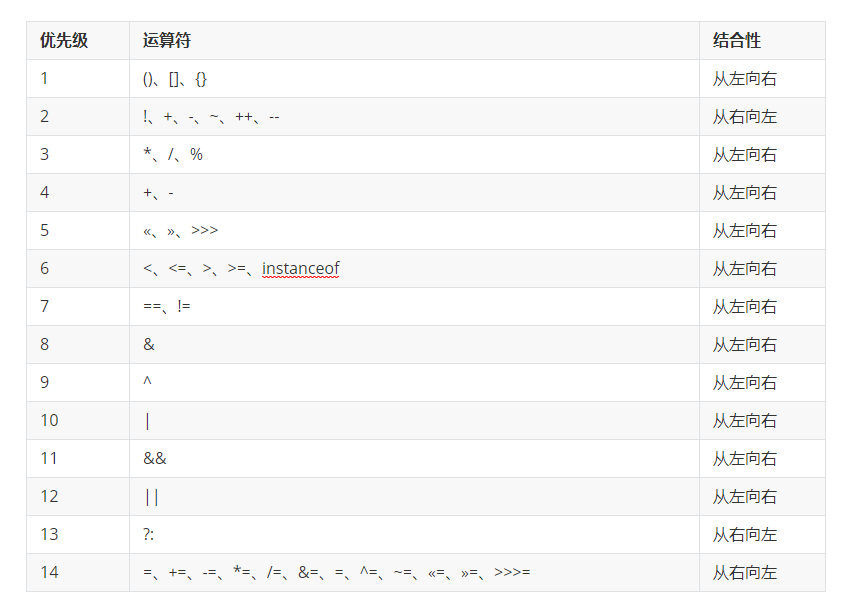【Android】Retrofit源码学习
【Android】Retrofit源码学习
使用Retrofit的流程#
通过Builder创建Retrofit对象:
Copy
Retrofit retrofit = new Retrofit.Builder().baseUrl("").addConverterFactory().build();
用Java注解描述API
Copy
public interface MyApi {
@GET("/api")
Call<Data> getData();}
通过retrofit创建api对象,并建立Call对象
Copy
MyApi api = retrofit.create(MyApi.class);
Call call = api.getData();
通过Call对象获取数据,enqueue()方法发送异步请求,同步方式则使用execute()方法
Copy
call.enqueue(new Callback() {
@Override
public void onResponse(Response<ZhuanLanAuthor> author) {
System.out.println("name: " + author.getName());
}
@Override
public void onFailure(Throwable t) {
}});
原理解析#
Retrofit所做的事情:将Java接口翻译成HTTP请求,然后用OkHttp去发送请求。
Retrofit使用动态代理实现了这件事
动态代理#
动态代理可以在不实现相同接口的proxy的情况下,对相关方法进行代理。
Java可以通过Proxy类实现代理模式,而其中的newProxyInstance()方法可以实现动态代理。通过实现InvocationHandler接口来定义代理动作。
Proxy.newProxyInstance(ClassLoader, Class<?>[] interfaces,InvocationHandler)
InvocationHandler的接口定义如下:
Copy
public interface InvocationHandler {
public Object invoke(Object proxy, Method method, Object[] args)
throws Throwable;}
参数含义:
proxy:代理对象
method: 代理方法
args: 方法的参数
实现invoke()方法来进行代理:
Copy
public Object invoke(Object proxy, Method method, Object[] args)
throws Throwable {
// do something
method.invoke(target, args);
// do something}
这样便能够成功对target方法进行代理,动态代理生成的代理类的名字为包名+$Proxy+id序号
请求流程分析#
回到使用方法,一开始要使用create()生成API的对象
Copy
MyApi api = retrofit.create(MyApi.class);
这里看下create()的源码:
Copy
public T create(final Class service) {
validateServiceInterface(service); // 判断是否为接口
return (T) Proxy.newProxyInstance(service.getClassLoader(), new Class<?>[] { service },
new InvocationHandler() {
private final Platform platform = Platform.get();
private final Object[] emptyArgs = new Object[0];
@Override public @Nullable Object invoke(Object proxy, Method method,
@Nullable Object[] args) throws Throwable {
// 如果是Object的方法则直接调用
if (method.getDeclaringClass() == Object.class) {
return method.invoke(this, args);
}
// 兼容Java8,Android平台不会调用, 确认平台的方法是通过反射机制判断类的加载信息
if (platform.isDefaultMethod(method)) {
return platform.invokeDefaultMethod(method, service, proxy, args);
}
// 主要方法,返回ServiceMethod对象
return loadServiceMethod(method).invoke(args != null ? args : emptyArgs);
}
});}
create使用了动态代理的方法,返回了Proxy.newProxyInstance()动态代理对象
所以api对象为动态代理对象,不是真正的实现接口产生的对象。当api对象调用getData()方法时会被动态代理拦截,然后调用InvocationHandler对象中的invoke()方法。
然后Retrofit通过反射获取到getData()方法的注解信息,配合invoke()的args参数,创建一个ServiceMethod对象
ServiceMethod传入Retrofit对象和Method对象,调用各个接口和解析器,最终生成一个Request,包含api的域名、path、http请求方法、请求头、body等等。最后返回一个Call对象。
Copy
ServiceMethod<?> loadServiceMethod(Method method) {
ServiceMethod<?> result = serviceMethodCache.get(method); // 如果有缓存则直接用
if (result != null) return result;
synchronized (serviceMethodCache) {
result = serviceMethodCache.get(method); // 线程安全,锁住后查看其他线程是否有加载
if (result == null) {
result = ServiceMethod.parseAnnotations(this, method); // 解析注解
serviceMethodCache.put(method, result); // 放入Cache中
}
}
return result;}
跟进ServiceMethod.parseAnnotation():
Copy
static ServiceMethod parseAnnotations(Retrofit retrofit, Method method) {
// 解析注解为HTTP请求的相关信息
RequestFactory requestFactory = RequestFactory.parseAnnotations(retrofit, method);
Type returnType = method.getGenericReturnType();
if (Utils.hasUnresolvableType(returnType)) {
throw methodError(method,
"Method return type must not include a type variable or wildcard: %s", returnType);
}
if (returnType == void.class) { //API接口方法返回值不能为void
throw methodError(method, "Service methods cannot return void.");
}
return HttpServiceMethod.parseAnnotations(retrofit, method, requestFactory);}
这里构建了一个RequestFactory对象,解析了接口中关于Http协议的相关信息,具体解析方法就是拿到Method的Annotation后instansof比较确定
Copy
RequestFactory(Builder builder) {
method = builder.method;
baseUrl = builder.retrofit.baseUrl;
httpMethod = builder.httpMethod;
relativeUrl = builder.relativeUrl;
headers = builder.headers;
contentType = builder.contentType;
hasBody = builder.hasBody;
isFormEncoded = builder.isFormEncoded;
isMultipart = builder.isMultipart;
parameterHandlers = builder.parameterHandlers;
isKotlinSuspendFunction = builder.isKotlinSuspendFunction;}
解析完后使用HttpServiceMethod.parseAnnotations()最后生成HttpServiceMethod对象
Copy
static HttpServiceMethod parseAnnotations(
Retrofit retrofit, Method method, RequestFactory requestFactory) {
boolean isKotlinSuspendFunction = requestFactory.isKotlinSuspendFunction; // kotlin支持,先忽略
boolean continuationWantsResponse = false;
boolean continuationBodyNullable = false;
Annotation[] annotations = method.getAnnotations(); // 方法的注解 @GET @POST @DELETE等
Type adapterType;
// ...这里有一段关于Kotlin支持的代码,adapterType
adapterType = method.getGenericReturnType(); // 接口方法的返回类型,一般为Call<T>
CallAdapter<ResponseT, ReturnT> callAdapter =
createCallAdapter(retrofit, method, adapterType, annotations);
Type responseType = callAdapter.responseType();
if (responseType == okhttp3.Response.class) {
throw methodError(method, "'"
+ getRawType(responseType).getName()
+ "' is not a valid response body type. Did you mean ResponseBody?");
}
if (responseType == Response.class) {
throw methodError(method, "Response must include generic type (e.g., Response<String>)");
}
// HEAD请求没有Response Body
if (requestFactory.httpMethod.equals("HEAD") && !Void.class.equals(responseType)) {
throw methodError(method, "HEAD method must use Void as response type.");
}
// 设置Response的解析,可以是json解析
Converter<ResponseBody, ResponseT> responseConverter =
createResponseConverter(retrofit, method, responseType);
okhttp3.Call.Factory callFactory = retrofit.callFactory; // 这里若是没有自定则默认为OkHttpClient
if (!isKotlinSuspendFunction) {
return new CallAdapted<>(requestFactory, callFactory, responseConverter, callAdapter); // 不使用Kotlin就关注这里就行了
}
// ...关于Kotlin的return}
最后返回了HttpServiceMethod的继承类CallAdapted,其中存放着RequestFactory、Converter、CallFactory
然后我们返回来看这段代码
Copy
return loadServiceMethod(method).invoke(args != null ? args : emptyArgs);
这里调用的invoke方法来为HttpServiceMethod中的invoke方法:
Copy
@Override final @Nullable ReturnT invoke(Object[] args) {
Call<ResponseT> call = new OkHttpCall<>(requestFactory, args, callFactory, responseConverter);
return adapt(call, args);}
// CallAdapted中
@Override protected ReturnT adapt(Call call, Object[] args) {
return callAdapter.adapt(call);}
这里的OKHttpCall为Okhttp3.Call的封装类,并实现了Call的相关方法enqueue、execute。
这里最后使用的adapt方法调用了Retrofit对象中的callAdapter.adapt()来对Call对象进行了适配。
若是开始初始化Retrofit对象时没有设置CallAdapter,则回默认使用Call,api接口定义时方法的返回类型只能是Call
所以便能解释如下代码:
Copy
Call call = api.getData();
api对象为一个动态代理对象,当执行getData()时进入动态代理函数,在InvocationHandler的invoke函数最后调用了HttpServiceMethod.invoke(args),返回了一个Call对象。
响应流程分析#
Retrofit使用中最后调用自定义的API接口方法返回了Call对象,这个对象实际上是Retrofit自己封装的OkHttpCall对象,随后我们使用enqueue方法发出异步请求
Copy
call.enqueue(new CallBack() {
@Override
public void onResponse(Call<MyData> call, Response<MyData> response) {
//... on response
}
@Override
public void onFailure(Call<MyData> call, Throwable t) {
//... on response
}})
跟进OkHttpCall.enqueue的源码:
Copy
@Override public void enqueue(final Callback callback) {
Objects.requireNonNull(callback, "callback == null"); // callback不能为null
okhttp3.Call call; // okhttp3的Call对象
Throwable failure;
synchronized (this) { // 线程安全
if (executed) throw new IllegalStateException("Already executed.");
executed = true;
call = rawCall; // rawCall为OkHttpCall保存的Okttp3的Call对象
failure = creationFailure;
if (call == null && failure == null) {
try {
// createRawCall中使用callFactory.newCall(requestFactory.create(args))
// 实际上就是OkHttpClient.newCall(OkHttp3.Request)
// 返回了OkHttp3.Call对象
call = rawCall = createRawCall();
} catch (Throwable t) {
throwIfFatal(t);
failure = creationFailure = t;
}
}
}
if (failure != null) {
callback.onFailure(this, failure);
return;
}
if (canceled) {
call.cancel();
}
// 使用okhttp3.Call的enqueue方法
call.enqueue(new okhttp3.Callback() {
@Override public void onResponse(okhttp3.Call call, okhttp3.Response rawResponse) {
Response<T> response;
try {
// 这里使用了Converter来解析Response
// 将Okhttp3.Response对象解析成Retrofit封装的Response对象
response = parseResponse(rawResponse);
} catch (Throwable e) {
throwIfFatal(e);
callFailure(e);
return;
}
try {
// 调用传进来的回调
callback.onResponse(OkHttpCall.this, response);
} catch (Throwable t) {
throwIfFatal(t);
t.printStackTrace();
}
}
@Override public void onFailure(okhttp3.Call call, IOException e) {
callFailure(e);
}
// 请求失败则进入callback的OnFailure方法
private void callFailure(Throwable e) {
try {
callback.onFailure(OkHttpCall.this, e);
} catch (Throwable t) {
throwIfFatal(t);
t.printStackTrace();
}
}
});}
其中parseResponse()方法:
Copy
Response parseResponse(okhttp3.Response rawResponse) throws IOException {
ResponseBody rawBody = rawResponse.body();
// 将Response Body 和 ResponseHeader 分开
// 之后再对Body进行处理
rawResponse = rawResponse.newBuilder()
.body(new NoContentResponseBody(rawBody.contentType(), rawBody.contentLength()))
.build();
int code = rawResponse.code(); // HTTP 状态码
// 响应不成功
if (code < 200 || code >= 300) {
try {
// Buffer the entire body to avoid future I/O.
ResponseBody bufferedBody = Utils.buffer(rawBody);
return Response.error(bufferedBody, rawResponse);
} finally {
rawBody.close();
}
}
// 响应无内容,填入null
if (code == 204 || code == 205) {
rawBody.close();
return Response.success(null, rawResponse);
}
// 保存source的Response Body,在解析失败时可以使用
ExceptionCatchingResponseBody catchingBody = new ExceptionCatchingResponseBody(rawBody);
try {
// 使用responseConverter来解析Body
T body = responseConverter.convert(catchingBody);
// 将解析好的Body装入Retrofit的Response对象返回
return Response.success(body, rawResponse);
} catch (RuntimeException e) {
catchingBody.throwIfCaught();
throw e;
}}
主要的parse过程便是,将Okhttp.Response对象的Body和Header拆开,若请求成功且Body有内容则将Body交给responseConverter取解析成响应对象,装入Retrofit的Response对象中返回。
总结#
Retrofit的特色:通过使用注解定义API接口的方式声明API,通过注解的解析,将解析得到的信息封装在RequestFactory中,在使用时调用create()方法生成Okhttp的Request对象。
通过动态代理的方式,代理用户定义的API接口方法,使其生成封装的OkHttpCall对象
封装okhttp.Call为OkHttpCall,使其能够使用CallAdapter(可以使返回的Call对象适配为其他的对象,如RxJava(没用过)中的对象)和ResponseConverter(支持Gson等解析)
目前只读到这里,还有一些机制没读完
参考文章#
https://www.jianshu.com/p/c1a3a881a144
https://segmentfault.com/a/1190000006767113
https://yq.aliyun.com/articles/658544
作者: y4ngyy






